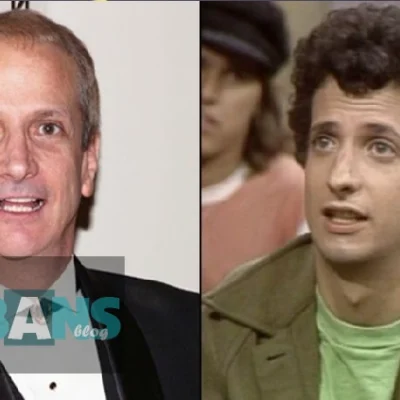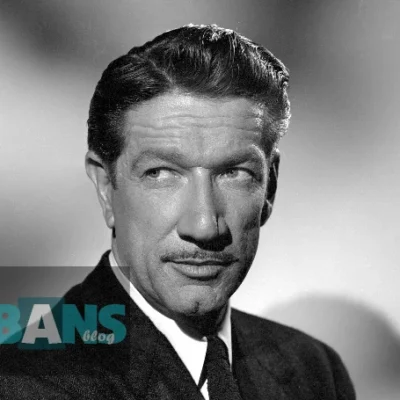Van Johnson Net Worth: Hollywood’s Golden Age Star’s Wealth Revealed
Ever wonder how much money the stars of Hollywood’s Golden Age really made? Van Johnson, one of the brightest stars of the 1940s and 1950s, built quite a fortune during his time in the spotlight. Let’s dive into the story of this famous actor’s wealth and see how he made – and spent – his Hollywood money.
Quick Bio: Van Johnson
| Category | Information |
|---|---|
| Full Name | Charles Van Dell Johnson |
| Nickname | “The Voiceless Sinatra,” “Johnson the Van” |
| Net Worth (at time of death) | $20 million |
| Born | August 25, 1916 |
| Died | December 12, 2008 (age 92) |
| Birthplace | Newport, Rhode Island, USA |
| Profession | Actor, Dancer, Singer |
| Years Active | 1935-1992 |
| Notable Movies | “A Guy Named Joe” (1943)<br>”Thirty Seconds Over Tokyo” (1944)<br>”The Last Time I Saw Paris” (1954) |
| Peak Salary (MGM) | $5,000 per week (equivalent to over $50,000 in 2024) |
| Major Studio | Metro-Goldwyn-Mayer (MGM) |
| Marriage | Eve Abbott Wynn (1947-1968, divorced) |
| Children | 1 (Schuyler Van Johnson) |
| Awards & Honors | Star on Hollywood Walk of Fame (1960)<br>Inducted into American Film Institute |
| Primary Residence | Beverly Hills, California |
| Major Sources of Wealth | • Movie contracts<br>• Television appearances<br>• Real estate investments<br>• Investment portfolio |
| Career Highlights | • MGM leading man in 1940s<br>• Over 100 movie and TV credits<br>• Successful transition to television |
| Business Ventures | Real estate investments and property holdings |
Early Life and Career Beginnings
Van Johnson started his journey to stardom from humble beginnings in Newport, Rhode Island. Born on August 25, 1916, he didn’t come from a wealthy family. But he had big dreams of making it in show business. His first stop? Broadway, New York, where he worked as a chorus boy in various shows.
The journey to Hollywood wasn’t easy for Johnson. He arrived in Hollywood, California in the early 1940s with just a few dollars in his pocket. At first, he got small parts in movies that barely paid the bills. But his luck changed when he caught the eye of people at Metro-Goldwyn-Mayer (MGM), one of the biggest movie studios at the time.
A terrible car accident almost ended Johnson’s career before it really began. But this accident actually helped make him famous! While he was recovering, the publicity made people interested in him. Soon, MGM saw his potential as a leading man, and that’s when things really started looking up.
Rise to MGM Stardom
Getting a contract with MGM was like winning the lottery for actors back then. Louis B. Mayer, the big boss at MGM, saw something special in Johnson. The studio system meant steady work and a regular paycheck – something rare in Hollywood today.
Johnson’s star really began to shine with movies like “A Guy Named Joe” and “Thirty Seconds Over Tokyo.” He worked with famous co-stars like Spencer Tracy and June Allyson. These movies weren’t just hits – they were huge box office successes that made Johnson one of Hollywood’s most bankable stars.
During his peak earning period in the late 1940s, Johnson was making serious money. The studio system salary he earned put him among the top-paid actors of his time. But exactly how much? Well, during the height of his career, he was earning around $5,000 per week – that’s like making over $50,000 per week today!
Van Johnson’s Movie Salary History
Let’s talk money! When Johnson first started at MGM, his early contract rates were pretty modest. He made about $350 per week – not bad for the 1940s, but nothing compared to what was coming. But after hits like “The Human Comedy,” his salary shot way up.
During his peak salary years, Johnson was pulling in that impressive $5,000 weekly paycheck we mentioned earlier. And that wasn’t all! He got bonuses when his movies did well at the box office. Plus, the studio paid for lots of his expenses, like clothes and publicity photos.
How did this compare to other stars? Well, Clark Gable was making about $7,000 per week, and Gene Kelly earned similar amounts. Johnson wasn’t the highest-paid star at MGM, but he was definitely in the upper ranks. His steady work in hits like “Easy to Wed” and “State of the Union” kept the money flowing.
Real Estate and Investment Portfolio
Like many smart Hollywood stars, Johnson invested in property assets. His main home was a beautiful place in Beverly Hills – very fancy, but not as flashy as some other stars’ mansions. He bought it in the 1940s when property in Hollywood Hills was still reasonably priced.
But Johnson didn’t stop there. He made real estate investments in other areas too. He owned a vacation home and some rental properties that brought in extra money. Pretty smart thinking for a guy who started with nothing!
For investment strategies, Johnson played it pretty safe. He put money into stocks and bonds, but wasn’t known for taking big risks. He worked with financial advisors who helped him manage his Hollywood fortune wisely.
Income from Television and Later Career
When television came along in the 1950s, lots of movie stars turned up their noses at it. But not Johnson! He saw television appearances as a new way to make money. Smart move – because the television transition helped him keep earning even as the studio system started falling apart.
For guest appearances on TV shows, Johnson could command pretty good fees. While not as high as his movie star days, he could still earn thousands of dollars for a single episode. That’s not bad for a few days’ work!
His later career earnings came from a mix of sources. He did stage performances, television shows, and even some brand endorsements. While the really big paychecks of his MGM days were behind him, he still made a good living well into the 1970s and beyond.
Personal Life and Expenses
Johnson lived well, but he wasn’t known for throwing money around like some Hollywood stars. His lifestyle choices were pretty modest by movie star standards. Sure, he had nice cars and good clothes, but he wasn’t buying diamond-studded everything!
His marriage to Eve Abbott Wynn and their later divorce did impact his finances. The divorce settlement took a chunk out of his savings, like most Hollywood divorces do. But because he had been careful with money, it didn’t wreck him financially.
Living costs in Beverly Hills weren’t cheap, and maintaining his Hollywood image took money too. But Johnson was smart about his spending. He kept his main home for decades instead of constantly buying new ones like some stars did.
Legacy and Estate Value
When Van Johnson passed away in 2008, his final net worth estimation was around $20 million. That includes all his savings, properties, and other assets. Pretty impressive for a kid who started with nothing in Newport!
The estate distribution went mostly to his daughter, Schuyler. Johnson had done good inheritance planning, so things were pretty clear about who got what. Some of his Hollywood memorabilia was quite valuable too.
Even today, his movies still earn some money through film royalties and rights. When classic movies show on TV or streaming services, his estate gets a little something. Not huge amounts, but it’s part of his financial legacy that keeps going.
Impact of Van Johnson’s Financial Decisions
Looking back, Johnson made some really smart investment choices. He didn’t blow all his money when he was making it big. Instead, he saved, invested in real estate, and planned for the future.
His career moves affecting wealth were usually pretty smart too. Even when movie roles started getting scarcer, he adapted by moving into television and stage work. That flexibility helped him keep earning when other stars struggled.
For long-term financial planning, Johnson did better than a lot of Hollywood stars. He worked with good advisors, saved his money, and made investments that kept growing over time. That’s why he was able to live comfortably right up until the end.
Conclusion
Van Johnson’s net worth story is pretty impressive. From chorus boy to wealthy movie star, he built a fortune of around $20 million through smart work and good money management. His journey shows that talent combined with smart financial decisions can lead to lasting wealth.
Want to learn more about how stars managed their money during Hollywood’s Golden Age? Check out our other articles about classic Hollywood stars and their fortunes. And don’t forget to share this article if you found it interesting!
Don’t miss out on the latest trends and insights—only on UrbansBlog!





No Comment! Be the first one.